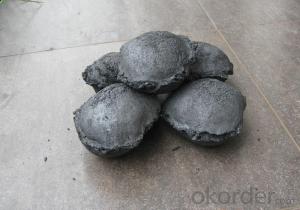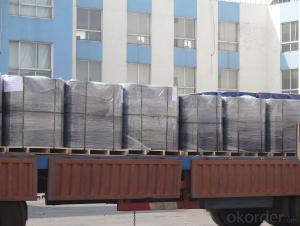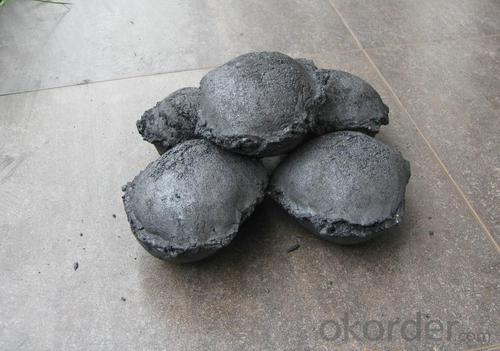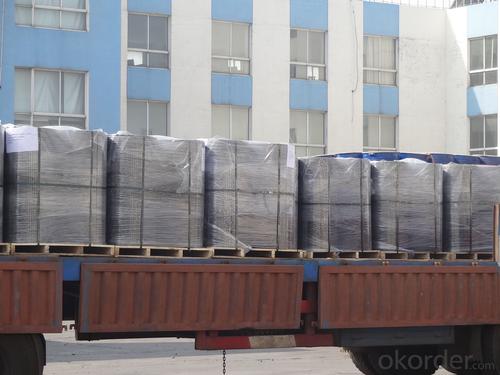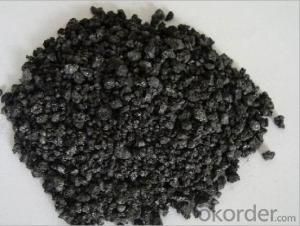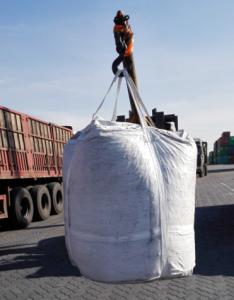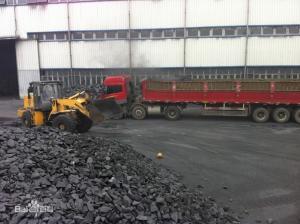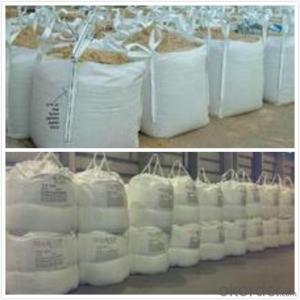Shortest Shipping Time Calcined Petroleum Coke
- Loading Port:
- Tianjin
- Payment Terms:
- TT OR LC
- Min Order Qty:
- 11 m.t.
- Supply Capability:
- 10000000 m.t./month
OKorder Service Pledge
OKorder Financial Service
You Might Also Like
1.Structure of Calcined Petroleum Coke Description
Calcined Petroleum Coke is made from raw petroleum coke,which is calcined in furnace at a high temperature(1200-1300℃).CPC/Calcined Petroleum Coke is widely used in steelmaking,castings manufacture and other metallurgical industry as a kind of recarburizer because of its high fixed carbon content,low sulfur content and high absorb rate.Besides,it is also a best kind of raw materials for producing artifical graphite(GPC/Graphitized Petroleum Coke) under the graphitizing temperature(2800℃).
2.Main Features of the Calcined Petroleum Coke
High-purity graphitized petroleum coke is made from high quality petroleum coke under a temperature of 2,500-3,500°C. As a high-purity carbon material, it has characteristics of high fixed carbon content, low sulfur, low ash, low porosity etc.It can be used as carbon raiser (Recarburizer) to produce high quality steel,cast iron and alloy.It can also be used in plastic and rubber as an additive.
3. Calcined Petroleum Coke Images
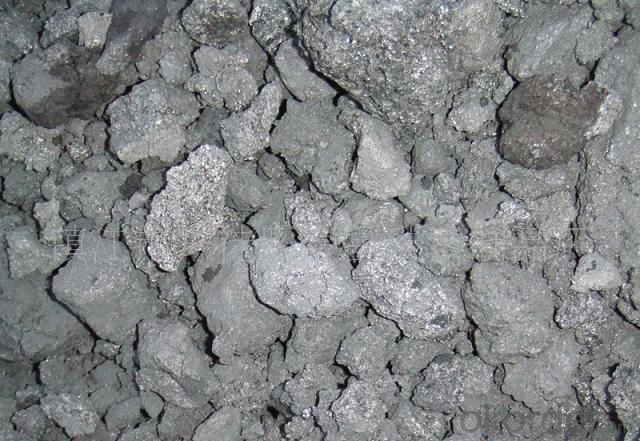

4. Calcined Petroleum Coke Specification
| Place of Origin: | Ningxia, China (Mainland) | Brand Name: | CNBM | Model Number: | 1-5MM 1-4MM 2-5MM 0-10MM |
| Application: | as carbon raiser in steel and casting factory | Dimensions: | F.C:90-96%MIN S:0.18-0.3%MAX | Chemical Composition: | F.C S ASH V.M MOISTURE |
| color: | black |
5.FAQ of Calcined Petroleum Coke
1). Q: Are you a factory or trading company?
A: We are a factory.
2). Q: Where is your factory located? How can I visit there?
A: Our factory is located in ShanXi, HeNan, China. You are warmly welcomed to visit us!
3). Q: How can I get some samples?
A: Please connect me for samples
4). Q: Can the price be cheaper?
A: Of course, you will be offered a good discount for big amount.
- Q: What are the impacts of carbon emissions on the stability of mountains?
- Carbon emissions have significant impacts on the stability of mountains. One of the most prominent impacts is the acceleration of global warming, which leads to the melting of glaciers and permafrost. As mountains are home to many glaciers, the increase in temperature causes these glaciers to melt at an alarming rate. This melting can result in the destabilization of mountains, leading to increased landslide and rockfall activity. Furthermore, carbon emissions contribute to the acidification of rainwater. Acid rain can erode the rocks and soil in mountains, weakening their stability. This erosion can lead to slope instability, making mountains more susceptible to landslides and other forms of mass movements. Additionally, carbon emissions contribute to changes in precipitation patterns. Mountain ecosystems heavily rely on a delicate balance of rainfall and snowfall. However, climate change caused by carbon emissions disrupts this balance, leading to altered precipitation patterns. This can result in increased water runoff and a reduction in snowpack, both of which contribute to mountain destabilization. Moreover, carbon emissions have indirect impacts on mountain stability through changes in vegetation patterns. As temperatures rise, plant species may migrate to higher altitudes in search of cooler climates. This can result in the loss of vegetation in lower elevation areas, which play a crucial role in stabilizing slopes and preventing erosion. The absence of plant cover leads to increased soil erosion, leaving mountains more vulnerable to landslides and other erosive processes. In conclusion, carbon emissions have detrimental impacts on the stability of mountains. The acceleration of global warming, acidification of rainwater, altered precipitation patterns, and changes in vegetation patterns all contribute to the destabilization of mountains. It is crucial to reduce carbon emissions and mitigate climate change to protect and preserve these majestic natural formations.
- Q: How does carbon dating work?
- Carbon dating works by measuring the amount of radioactive carbon-14 isotopes in organic materials, such as bones or wood. As living organisms absorb carbon-14 from the atmosphere, they maintain a constant ratio of carbon-14 to carbon-12. However, once an organism dies, it no longer takes in carbon-14, and the existing carbon-14 begins to decay at a known rate. By comparing the remaining carbon-14 with the known decay rate, scientists can determine how long ago the organism died, providing a reliable method for dating organic materials up to about 50,000 years old.
- Q: I heard that 85 of the furnace rock carbon harmony, and the result that I use advanced strengthening machine when I want to give high-grade furnace rock carbon, this how ah?
- DNF advanced method for obtaining carbon from furnace rock:DNF advanced furnace carbon can acquire rock at the mall, priced at 450 points and 50 points 10 coupon coupon 1.DNF advanced furnace rock carbon action:The use of advanced furnace rock carbon can start at the Kylie advanced equipment reinforcement machine, strengthening the probability of success is greater.Point Keri election advanced strengthening, plus ten or more equipment to strengthen, the probability is 10% more than ordinary furnace carbon
- Q: What are the impacts of carbon emissions on human health in developing countries?
- Carbon emissions have significant impacts on human health in developing countries. These emissions, primarily from the burning of fossil fuels and deforestation, contribute to the worsening of air quality, leading to a range of health problems. One of the most immediate and visible impacts is respiratory diseases. High levels of carbon emissions result in the release of harmful pollutants such as particulate matter and nitrogen dioxide. These pollutants can irritate the respiratory system and exacerbate existing conditions like asthma and bronchitis. In developing countries where access to healthcare may be limited, these respiratory diseases can be particularly detrimental, leading to increased mortality rates. Furthermore, carbon emissions contribute to climate change, which has indirect effects on human health. Rising temperatures and changing weather patterns can lead to the spread of vector-borne diseases like malaria and dengue fever. Developing countries often lack the necessary infrastructure and resources to effectively combat these diseases, resulting in increased rates of infection and mortality. Moreover, carbon emissions contribute to the formation of ground-level ozone, a harmful air pollutant. Exposure to high levels of ozone can cause respiratory problems, cardiovascular issues, and even premature death. Developing countries, with their limited access to healthcare and vulnerability to extreme weather events, may experience higher rates of illness and mortality due to ozone exposure. Additionally, carbon emissions contribute to the acidification of oceans, which harms marine ecosystems. This, in turn, affects the availability and quality of seafood, a vital source of nutrition for many developing countries. Impaired access to nutritious food can lead to malnutrition and various health issues, especially among vulnerable populations such as children and pregnant women. In conclusion, carbon emissions have severe impacts on human health in developing countries. The release of pollutants from burning fossil fuels and deforestation leads to respiratory diseases, the spread of vector-borne illnesses, ozone-related health problems, and nutritional deficiencies. These health impacts highlight the need for developing countries to prioritize sustainable development and transition to clean energy sources, while also emphasizing the importance of international cooperation to address this global issue.
- Q: How does carbon impact the acidity of rainfall?
- Carbon dioxide (CO2) in the atmosphere reacts with water to form carbonic acid (H2CO3), which contributes to the acidity of rainfall. When carbon emissions from human activities increase, the concentration of CO2 in the atmosphere also increases. This leads to higher levels of carbonic acid in the rainwater, making it more acidic. This phenomenon is known as acid rain and can have detrimental effects on aquatic ecosystems, soil quality, and even human health.
- Q: What are the environmental impacts of burning fossil fuels?
- Burning fossil fuels has significant environmental impacts, including air pollution, greenhouse gas emissions, and climate change. When fossil fuels, such as coal, oil, and natural gas, are burned, they release harmful pollutants into the atmosphere, such as sulfur dioxide, nitrogen oxides, and carbon dioxide. These pollutants contribute to air pollution, smog formation, and respiratory issues. Additionally, carbon dioxide emissions from burning fossil fuels are the primary driver of global warming and climate change, leading to rising temperatures, sea-level rise, and extreme weather events. The extraction and transportation of fossil fuels also have environmental consequences, such as habitat destruction, water pollution, and the disruption of ecosystems. Therefore, reducing our reliance on fossil fuels and transitioning to cleaner, renewable energy sources is crucial for mitigating these environmental impacts.
- Q: How does deforestation contribute to carbon emissions?
- Deforestation plays a significant role in contributing to carbon emissions. When forests are cleared or burned down, the carbon stored in trees and vegetation is released into the atmosphere in the form of carbon dioxide (CO2), a greenhouse gas that contributes to global warming. Forests act as natural carbon sinks, absorbing CO2 from the atmosphere through the process of photosynthesis. Trees and plants convert CO2 into oxygen and store the carbon in their trunks, branches, leaves, and roots. This process helps to regulate the Earth's climate by reducing the concentration of CO2 in the atmosphere. However, when forests are deforested, this natural carbon storage system is disrupted. The carbon that was once stored in trees and vegetation is released back into the atmosphere, increasing the concentration of CO2. This process is further exacerbated when forests are burned, as the combustion of trees and plant material releases even larger amounts of carbon. The loss of forests also leads to a decrease in biodiversity and the destruction of habitats for numerous species, which in turn disrupts the delicate balance of ecosystems. As these ecosystems are disrupted, they become less efficient at absorbing and storing carbon, further contributing to increased carbon emissions. Moreover, deforestation contributes to carbon emissions indirectly through several other means. For instance, when trees are cleared, the soil beneath becomes exposed to sunlight and heat, causing it to dry and release stored carbon. Additionally, deforestation often leads to the conversion of land for agricultural purposes, such as livestock farming or palm oil plantations, which can result in increased methane emissions, another potent greenhouse gas. In summary, deforestation contributes to carbon emissions by releasing the stored carbon in trees and vegetation, disrupting the natural carbon storage system, and indirectly contributing to the release of other greenhouse gases. It is crucial to address deforestation and promote sustainable land management practices to mitigate the effects of climate change and reduce carbon emissions.
- Q: What is carbon neutral construction?
- Carbon neutral construction refers to the process of designing, constructing, and maintaining buildings in a way that minimizes their carbon footprint and offsets any remaining emissions. This involves using sustainable materials, implementing energy-efficient systems, and utilizing renewable energy sources to achieve net-zero carbon emissions throughout the building's lifecycle.
- Q: What are the different methods of measuring carbon dioxide levels in the atmosphere?
- Some of the different methods of measuring carbon dioxide levels in the atmosphere include: 1) Ground-based stations: These are fixed monitoring stations that collect air samples and measure carbon dioxide concentrations using gas analyzers. 2) Aircraft measurements: Scientists use aircraft equipped with sensors to sample air at different altitudes and locations to gather data on carbon dioxide levels. 3) Satellite observations: Satellites equipped with remote sensing instruments measure the concentration of carbon dioxide in the atmosphere from space. 4) Oceanic measurements: Researchers collect water samples from various depths in the ocean to analyze carbon dioxide levels and understand its absorption by the oceans. 5) Ice core analysis: By drilling and analyzing ice cores from glaciers and ice sheets, scientists can reconstruct carbon dioxide levels over thousands of years. These methods provide complementary data to understand the distribution and changes in carbon dioxide levels in the atmosphere.
Send your message to us
Shortest Shipping Time Calcined Petroleum Coke
- Loading Port:
- Tianjin
- Payment Terms:
- TT OR LC
- Min Order Qty:
- 11 m.t.
- Supply Capability:
- 10000000 m.t./month
OKorder Service Pledge
OKorder Financial Service
Similar products
Hot products
Hot Searches
Related keywords
